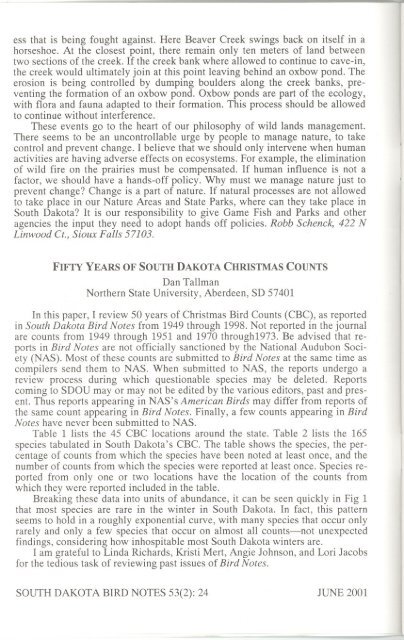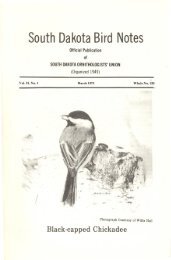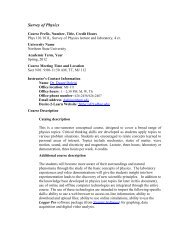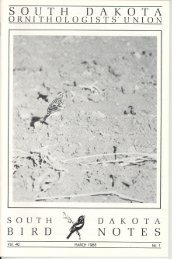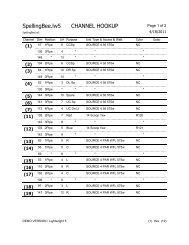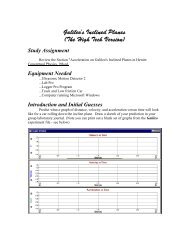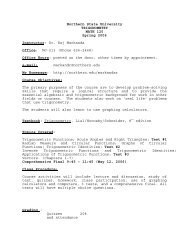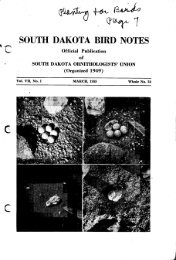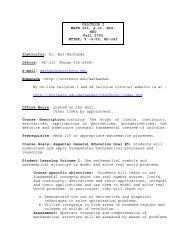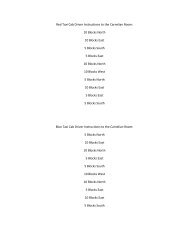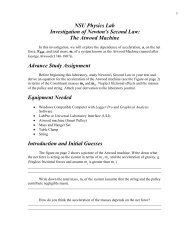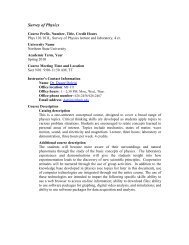Vol 53, 2001 - Northern State University
Vol 53, 2001 - Northern State University
Vol 53, 2001 - Northern State University
Create successful ePaper yourself
Turn your PDF publications into a flip-book with our unique Google optimized e-Paper software.
..ess that is being fought against. Here Beaver Creek swings back on itself in ahorseshoe. At the closest point, there remain only ten meters of land betweentwo sections of the creek. If the creek bank where allowed to continue to cave-in,the creek would ultimately join at this point leaving behind an oxbow pond. Theerosion is being controlled by dumping boulders along the creek banks, preventingthe formation of an oxbow pond. Oxbow ponds are part of the ecology,with flora and fauna adapted to their formation. This process should be allowedto continue without interference.These events go to the heart of our philosophy of wild lands management.There seems to be an uncontrollable urge by people to manage nature, to takecontrol and prevent change. I believe that we should only intervene when humanactivities are having adverse effects on ecosystems. For example, the eliminationof wild fire on the prairies must be compensated. If human influence is not afactor, we should have a hands-off policy. Why must we manage nature just toprevent change? Change is a part of nature. If natural processes are not allowedto take place in our Nature Areas and <strong>State</strong> Parks, where can they take place inSouth Dakota? It is our responsibility to give Game Fish and Parks and otheragencies the input they need to adopt hands off policies. Robb Schenck, 422 NLinwood Ct') Sioux Palls 57103.FIFTY YEARS OF SOUTH DAKOTA CHRISTMAS COUNTSDan Tallman<strong>Northern</strong> <strong>State</strong> <strong>University</strong>, Aberdeen, SD 57401In this paper, I review 50 years of Christmas Bird Counts (CBC), as reportedin South Dakota Bird Notes from 1949 through 1998. Not reported in the journalare counts from 1949 through 1951 and 1970 through1973. Be advised that reportsin Bird Notes are not officially sanctioned by the National Audubon Society(NAS). Most of these counts are submitted to Bird Notes at the same time ascompilers send them to NAS. When submitted to NAS, the reports undergo areview process during which questionable species may be deleted. Reportscoming to SDOU mayor may not be edited by the various editors, past and present.Thus reports appearing in NAS's American Birds may differ from reports ofthe same count appearing in Bird Notes. Finally, a few counts appearing in BirdNotes have never been submitted to NAS.Table 1 lists the 45 CBC locations around the state. Table 2 lists the 165species tabulated in South Dakota's CBC. The table shows the species, the percentageof counts from which the species have been noted at least once, and thenumber of counts from which the species were reported at least once. Species reportedfrom only one or two locations have the location of the counts fromwhich they were reported included in the table.Breaking these data into units of abundance, it can be seen quickly in Fig 1that most species are rare in the winter in South Dakota. In fact, this patternseems to hold in a roughly exponential curve, with many species that occur onlyrarely and only a few species that occur on almost all counts-not unexpectedfindings, considering how inhospitable most South Dakota winters are.I am grateful to Linda Richards, Kristi Mert, Angie Johnson, and Lori Jacobsfor the tedious task of reviewing past issues of Bird Notes.SOUTH DAKOTA BIRD NOTES <strong>53</strong>(2): 24 JUNE <strong>2001</strong>


